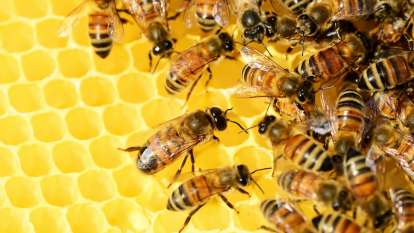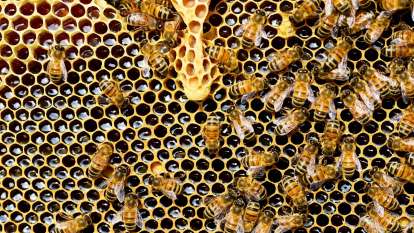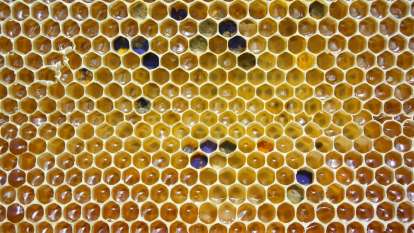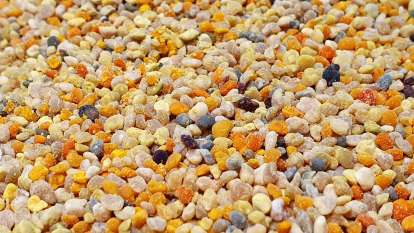Beehive products
The products of the beehive represent everything that results from the pollination of the plants, the collection of different substances from them, the collection of pollen, but also the intense work of the bees inside the hive.
Bee products are a rich source of nutrients, vitamins and calories, thus being very beneficial for the health of our body.
Each of us heard at least once about the wonderful products created by the small bees from pollen and other substances collected from plants.
Bees have lived on earth for about 100 million years and, being very hardy and intelligent, they have adapted very well to any living conditions.
Apiculture is the growth and care of bees and has been practiced since ancient times. People take care of bees and hives in order to benefit from all the healthy bee products.
Everything that results from the beehive can be consumed by humans, whether it is honey, propolis, cap, pollen, royal jelly, pasture, honeycomb, wax, bee venom.
These 100% natural products are full of vitamins, minerals, nutrients and are also called superfoods, due to the multitude of beneficial effects they have on the body.
Honey
Honey is a natural medicine, being one of the healthiest foods that has a multitude of benefits for the body. Bees make this sweet liquid to feed on. Honey is produced through a complex process, which begins with the collection of pollen and manna from trees and flowers.
After collecting the raw material, they mix it with saliva and chemicals (enzymes and amino acids) to make honey and they store it in the honeycomb cells. For a period of time, the honey is left in the honeycomb to evaporate the water in its composition, and at the end, the bees close the cells hermetically with some wax caps.
The nutritional profile of honey
Honey contains about 300 useful elements including trace elements: iron, potassium, copper, phosphorus, calcium, manganese, carbohydrates, vitamins B, H, K, enzymes, hormones, lipids, organic acids, flavonoids, ascorbic acid, retinol, tocopherol, folic acid, gluconic acid, lactic acid, tartaric acid.
100 grame de miere conține:
Carbohydrates: 82 g
Protein: 0,3 g
Potassium: 52 mg
Calcium: 6 mg
Magnesium: 2 mg
Vitamin C: 0,5 mg
Sodium: 4 mg
Iron: 0,4 mg
The benefits of honey
- Energizes the body and banishes fatigue - processing glucose from honey helps increase the body's energy levels;
- Soothes cough - a teaspoon of honey soothes cough due to its antiseptic properties;
- Increased immunity - honey consumed constantly increases immunity against allergens and prevents colds and flu;
- Prevents cancer - honey consumption has beneficial effects against the development of cancerous tumors;
- Prevents osteoporosis - honey (all types) contains small amounts of royal jelly, a natural substance that contains estrogen, the hormone that plays a crucial role in fixing calcium in the bones; osteoporosis occurs when the body no longer synthesizes a sufficient amount of estrogen;
- Prevents diabetes - replacing sugar in the diet with honey reduces the rate of diabetes by 60-70%;
- Prevents obesity - complete replacement of sugar with honey is beneficial for the body due to the fact that it is not as addictive as regular sugars;
- Prevents premature menopause - due to the rejuvenating effects of honey, daily consumption stimulates ovarian activity and helps delay menopause;
- Prevents the appearance of caries - one of the causes that causes the appearance of caries is the metabolic disorder caused by sugar consumption; complete replacement of sugar with honey is recommended for prevention;
- Moisturizes the skin - honey is beneficial for the skin, moisturizes the skin and leaves it radiant due to the intake of vitamins in the skin.
Contraindications and precautions
Anyone can consume honey except for the people with diabetes and people who are allergic to bee products.
Types of honey and therapeutic indications
Polyfloral honey
It encompasses the nectar of a few dozen or hundreds of medicinal plants and thus borrows the therapeutic properties from each of them. Its properties are:
- is indicated in case of physical fatigue, intellectual fatigue, overwork or convalescence;
- it has a strong anti-inflammatory, anti-allergic, calming, sedative, expectorant, anti-tussive and anti-septic action;
- it nourishes and strengthens nerve cells;
- keeps under control the activity of the endocrine system;
- fights constipation and bowel diseases;
- it acts on the heart muscle and on the coronary circulation;
- improves sleep;
- keeps under control the activity of the endocrine system.
Lime honey
It is the strongest of all types of honey, has the most pleasant aroma and has a light color with green reflections. It is a type of honey that crystallizes very easily, especially if kept cold. What is it good at?
- it contains oligo-elements such as manganese, calcium, potassium;
- is a good remedy against stress and fatigue;
- sedative for the nervous system, it is an effective treatment for insomnia and migraines;
- has anti-inflammatory and antimicrobial properties and is useful for treating sore throats, asthma, bronchitis, laryngitis, cough, cough;
- it can be used in the therapy of gastric pain, cramps, kidney disease or gallbladder.
Sun-flower honey
It is beneficial for respiratory diseases such as bronchitis and stomach diseases. It has antibacterial, general tonic and psychic tonic properties and also stimulates immunity.
Acacia honey
It is the honey that is produced from pollen collected from acacia flowers. It has many benefits:
- is rich in oligo-elements (chromium, iodine, copper, iron, zinc, fluorine) and is used for digestive or gastrointestinal problems;
- high in fructose and low in glucose;
- due to the low glycemic index, it is recommended for diabetics but also for people with sore throat, colds or coughs;
- it is a good treatment for neurosis and asthenias due to its calming psychic properties and also has calming gastric, anti-diarrheal, diuretic properties;
- it is a good stimulant for cardiac activity;
- it is a good expectorant and soothing cough.
Raspberry honey
It is a variety with rejuvenating effects, which regulates the activity of the ovaries, prevents the appearance of diseases such as osteoporosis and scleroderma. It is a good remedy for cold and cough and it has rejuvenating properties for the skin and tan.
Wildflower honey (meadow)
It has a high concentration of sugars and it is indicated in states of convalescence, overwork or growth disorders. Wildflower honey has anti-microbial, anti-inflammatory, anti-allergic and anti-tussive action.
Mint honey
Bees collect nectar for honey from mint crops. Mint honey is a good gastric sedative, facilitates digestion, fights bloating and relieves cough.
Clover honey
It is obtained from bees that are kept near fields cultivated with forage varieties of the species Trifolium Repens. It has a diuretic action and helps eliminate excess water from the tissues.
Poppy honey
It is made of poppy flowers and has a darker color because in the composition appear pollen granules, which are black. It has an antispasmodic, somniferous but also anaphrosis effect (reduces sexual excitation).
Coriander honey
The honey has a light color and a pleasant smell, which appears two weeks after extraction, during which time the smell is unpleasant. It is recommended for ulcers and hyperacid gastritis.
Little thyme honey
Little thyme honey has a light golden color and an intense aroma. It has a lot of beneficial properties for the body:
- is rich in copper, boron and volatile oils;
- has antiseptic properties and can be used to treat skin infections and purulent wounds;
- if administered internally it has calming and expectorant properties and is beneficial for treating cough, bronchitis, hoarseness;
- has a beneficial effect on the functioning of the kidneys and liver;
- it acts as a tonic for anemia.
Thyme honey
Thyme honey is known for its therapeutic properties, such as:
- actively opposes hormone-dependent female tumors and prostate cancer;
- has natural biocides (thymol and carvacrol), thus acquires antibacterial, antimicrobial and antifungal properties and can treat burns, wounds, fungal skin diseases and diseases of the upper respiratory tract: sore throat, flu, pharyngitis;
- it prevents the development of malignant tumors and reduces the viability of mutant cancer cells.
Chestnut honey
Chestnut honey contains minerals, iron and tannins, which relieve the symptoms of anemia and flu and also soothe productive cough. Its consumption helps to fluidize the blood circulation, thus being beneficial for rheumatism and varicose veins.
Colza honey
It has a special consistency and a white-yellow color, but it is not as sweet as other types of honey. It contains calcium and boron, thus being useful for people with osteoporosis.
Due to its antibacterial properties, it helps to regenerate and maintain the elasticity of the vascular walls, but also to lower cholesterol.
Lavender honey
Honey made from from lavender has a tonic and diuretic effect. It is indicated for people with lung diseases, but also with rheumatic problems, because it relieves the symptoms of rheumatism.
Manna honey
Manna, extrafloral or forest honey is obtained from the sap of the leaves of trees such as oak, beech, pine, spruce or ash and has a dark brown color. It has beneficial effects such as:
- is rich in minerals (calcium, iron, magnesium) and amino acids;
- manna honey has an energizing effect and is indicated for children and people who are anemic or recovering;
- it is also recommended for athletes and active people, due to its revitalizing effects.
Fir honey
It is good for treating infections, especially those of the respiratory system due to its anti-infective, expectorant, anti-tussive properties. It has anti-inflammatory, antiseptic, anti-anemic, diuretic action.
It contains oligo-elements such as phosphorus, potassium, calcium, magnesium, sulfur, zinc, boron, copper.
Pine honey
It has a yellow-orange, dark green, dark brown or black color, depending on the source of the pine. It contains potassium, phosphorus, iron, cobalt, manganese, polysaccharides, glucose, sucrose, fructose and protein. It has antiseptic, antibacterial properties and increases the body's tone. It is a good antidepressant and treatment for strengthening immunity.
Manuka honey
Due to its antibacterial properties, it is used to treat bacterial infections, skin problems (burns, eczema, dermatitis), acne. Relieves colds, improves immunity and is beneficial for diseases of the digestive system (acidity, gastric reflux).
Honeycomb
Honeycomb is a complex biological product that is a mixture of all bee products: honey, pollen, propolis, wax, royal jelly. It is the purest bee product. Honeycomb is the house of the bees and contains beneficial substances not found in other bee products.
Honey wax caps (honeycomb caps)
It is a mixture of honey, wax and sometimes propolis. Honeycomb caps or cape result at the extraction of bee honey. If the honeycomb is at least 2/3 capped, it means that the honey is fully matured and the cell lids can be removed with a special fork.
Honey wax caps (capsicum) is an effective treatment for colds, flu and respiratory diseases and, if chewed, has beneficial effects on the oral cavity.
Propolis
Bee glue or propolis is a substance collected by bees from the buds and leaves of certain trees, which is used to glue honeycomb cells, plug beehive holes or cover pests that have entered the hive. Here are some of his properties:
- it is a natural antibiotic with strong antibacterial, antiviral and antifungal action;
- it is used by bees to disinfect the hive;
- it is administered in the form of grains, powder or propolis tincture;
- it contains chemical elements such as iron, zinc, copper, manganese, calcium, silicon.
Pollen
Pollen is one of the richest substances in the plant world. It is a protein food, containing vitamin A, B, C, D, E, P, mineral salts, amino acids, carbohydrates, mucilages, fats, natural antibiotics, enzymes and hormonal substances.
Royal jelly
Royal jelly is used to feed the queen bee.
In the case of human consumption, it has a tonic, energizing and rejuvenating effect on the body. It is rich in nutrients and collagen, thus increases immunity, helps restore neurons, normalizes the hormonal system, prevents colds and has an important role in the development of children.
Wax
Wax is a glandular product of bees that covers the cells of honeycombs in which larvae are housed or honey and pasture are stored. Discover its beneficial effects:
- contains a multitude of substances: mineral salts, fat-soluble vitamins, substances with bacteriostatic action, free fatty acids, esters, hydrocarbons, lactone, large molecule carbohydrates, colored substances;
- has inflammatory, healing and emollient properties;
- used in the cosmetics and pharmaceutical industry for making ointments and creams.
Apilarnil
Apilarnil is a complex of natural substances obtained from a total lyophilized extract of drone larvae. Find out its beneficial effects:
- has antibacterial, antifungal, healing, local anesthetic and trophic properties and acts favorably in case of gastritis, colitis, enterocolitis;
- has energetic and biostimulant properties of the general metabolism;
- it is recommended for physical and intellectual overwork, asthenia, convalescence, osteoporosis, treatment of inflammation.
Pasture (bee bread)
The pasture is also called bee bread, is their food and is obtained from pollen fermented in the hive. It is used to detoxify the body, protects the liver, digestive tract and helps reduce cholesterol. It is recommended for people with circulatory problems.
Bee venom
Bee venom is an acidic, colorless liquid, excreted by bees that feel threatened and has a multitude of benefits on beauty and health. Below are some of the benefits of the venom:
- contains sugars, minerals, amino acids, enzymes that strengthen the immune system;
- has anti-inflammatory properties due to the main substance contained in venom, melitin; relieves joint pain;
- reduces inflammation in the tissues and slows down the cellular aging process;
- can relieve acne through venom compounds, which destroy the bacteria that cause acne.
Did you know…?
You can check if the honey you buy is pure by a few tests:
- Dissolving in water - 100% natural honey is harder to dissolve in water and you can check it by adding a little honey in a glass of water at room temperature; if it dissolves quickly it means that it is not pure and has additives;
- Air bubble - if you turn the jar an air bubble will form, which must remain intact, move slowly and not break into smaller bubbles;
- Price - due to the complex process of completion and the time invested, the price is higher.




Comments